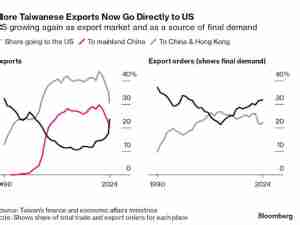Oil held at a three-month high in New York, supported by signs of falling American crude inventories yet capped by U.S.-China trade tensions.
Futures in New York were little changed. U.S. crude stockpiles fell by 2.5 million barrels last week, a Bloomberg survey showed before government data due Wednesday. President Donald Trump’s administration is set to put tariffs on a further $160 billion of Chinese goods Sunday, although Agriculture Secretary Sonny Perdue said they’re unlikely to be implemented. Chinese officials also expect the higher levies to be postponed, according to people familiar with the matter.
“For the market to push even higher, the key element is the signing of a trade agreement” between China and the U.S., said Gene McGillian, manager for market research at Tradition Energy. “That will rekindle expectations of economic growth and fuel demand growth.” Nevertheless, “we don’t have proof that there’s actually going to be a trade agreement,” he said.
Oil closed at the highest level since mid-September on Friday after the Organization of Petroleum Exporting Countries and its allies surprised the market with deeper-than-expected output cuts. But there are lingering concerns on adherence to the latest agreement, given undercompliance by some members in the previous round of reductions.
Attention has now turned back to the prolonged U.S.-China trade war and whether the two sides can nail down a much-hyped phase-one agreement.
West Texas Intermediate for January delivery rose 13 cents to $59.15 a barrel on the New York Mercantile Exchange as of 11:28 a.m. The contract closed 18 cents lower on Monday after jumping 7.3% last week.
Brent for February settlement was up 1 cent to $64.26 a barrel on the London-based ICE Futures Europe Exchange. The global benchmark crude traded at a $5.20 premium to WTI for the same month.
It would be the second straight weekly drop in U.S. stockpiles if the Bloomberg survey is confirmed by Energy Information Administration data. Still, inventories are near the highest since mid-July after rising in 10 of the 11 weeks through Nov. 22.









